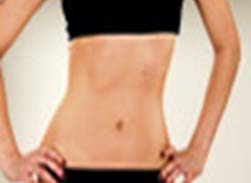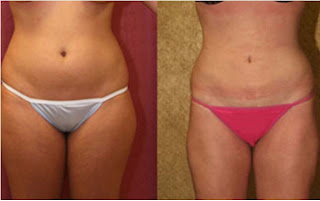Liposuction removes fat from specific areas of the body using suction. During this procedure a thin metal tube called a cannula is inserted through the tiny cuts in the skin and fat is suctioned out. With improved technology, the procedure has been made safer, easier, and less painful. The two newer techniques being used are tumescent liposuction and ultrasound-assisted liposuction. Tumescent liposuction is used to numb the area of the body where the cannula will be inserted. General anesthesia is not always required with this procedure. A large amount if an anesthetic solution containing lidocaine and epinephrine is usually injected into the fatty tissue before traditional liposuction is performed. Ultrasound-assisted liposuction uses ultrasound to liquefy the fat which makes it easier to remove. This technique is used in removing fat from the upper abdomen, sides and back.
During liposuction recovery the area of the body that was treated is firmly wrapped to help reduce swelling, bruising, and pain. Elastic bandages and tape, support hose, and a special girdle may be used depending on which part of the body is treated. Some patients have to wear the garment for at least 3 weeks following the surgery. You can expect alloy of bruising and swelling for at least the first 7 to 10 days after the procedure. Fluid may drain from the incision area for several days. In many cases, your plastic surgeon will prescribe antibiotics to reduce the risk of infection.
Most patients are able to get up and move around as soon as the procedure is finished and after the effects of the anesthesia have worn off. You can return to your normal activities as soon as you feel at ease. Most people return to work within a few days after the procedure. Liposuction recovery may take longer for larger areas that were treated. Because of the liposuction risks involved, it is mainly used to reshape one or more areas of the body and not to reduce body weight. It is not used to treat cellulite or stretch marks. This body contouring procedure is used on areas that have not responded well to diet and exercise, such as the outer thighs and hips on women and back on men. Other commonly treated areas are the face, neck, abdomen, back, buttocks, legs, and upper arms. Liposuction can be used alone or in combination with other cosmetic surgery procedures such as tummy tuck, breast reduction, or facelift.
For More Details:: http://www.beautifulself.com/lipo_risks.htm






